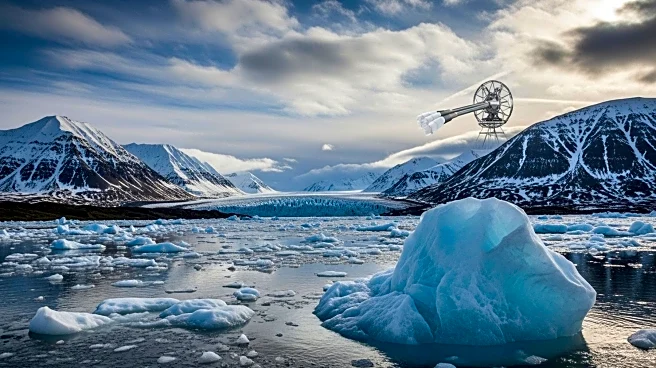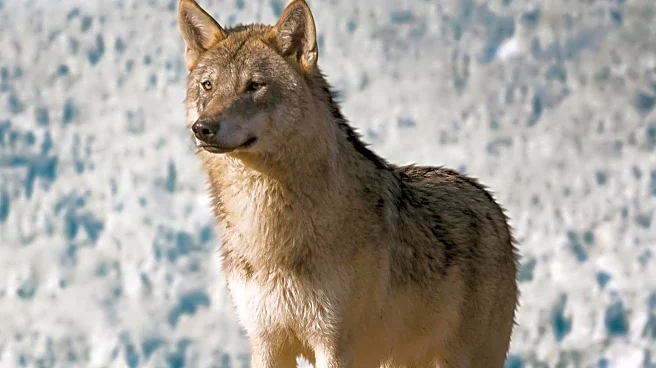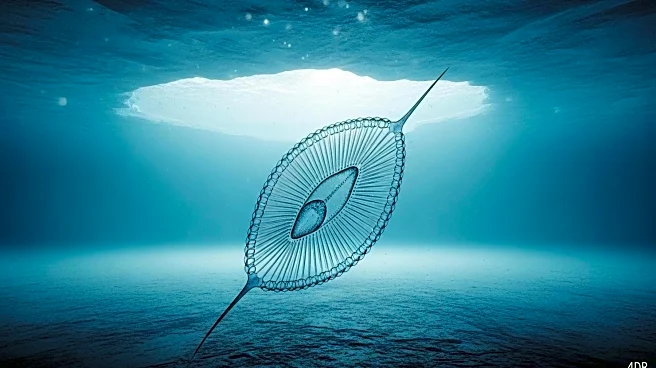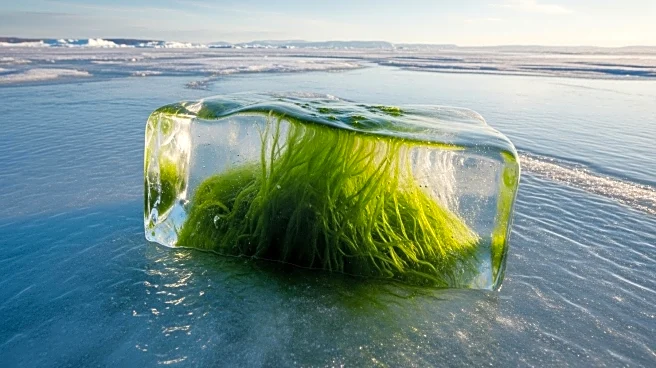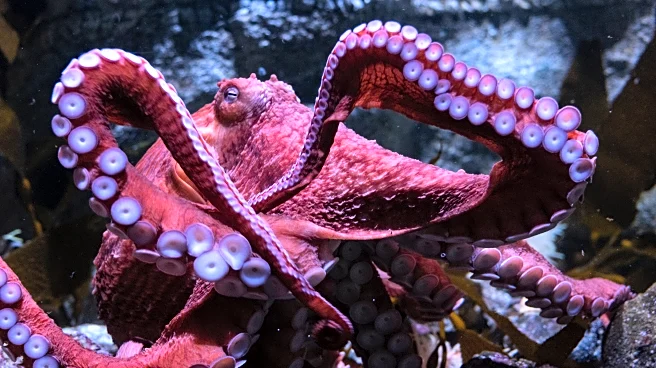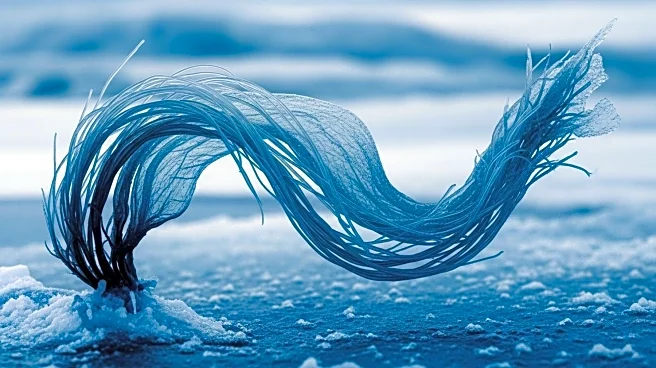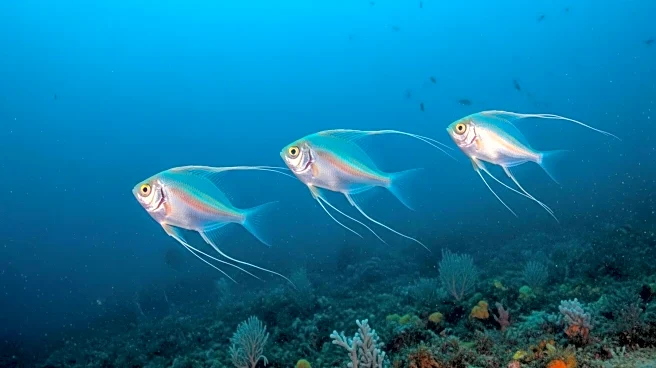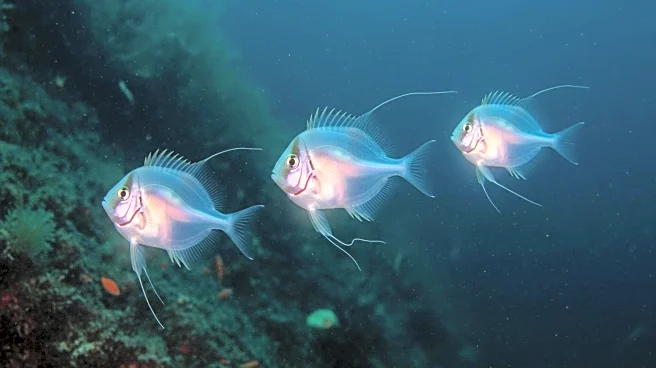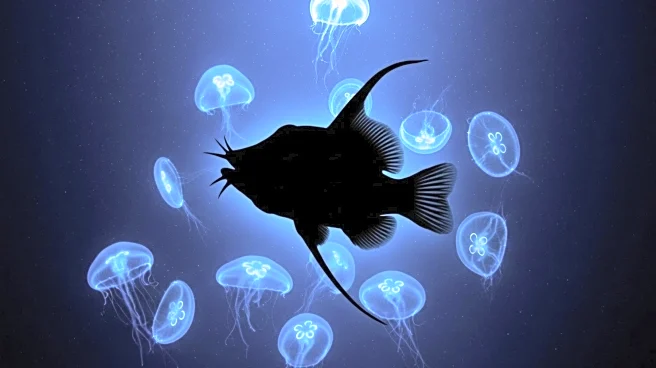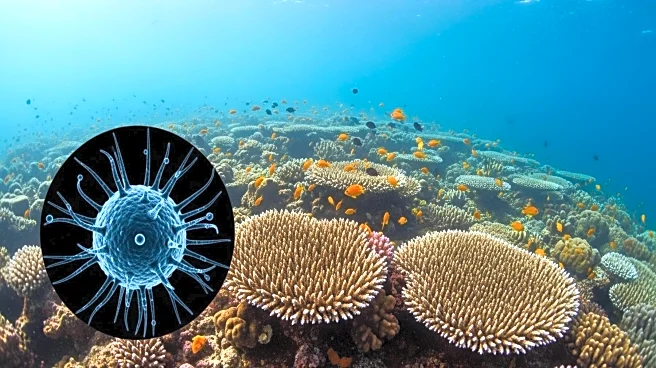What is the story about?
What's Happening?
Researchers from Stanford University have uncovered surprising activity among diatoms, single-celled algae, beneath the Arctic ice. Contrary to previous beliefs that these diatoms were dormant, the study reveals they are actively gliding at temperatures as low as -15°C. This discovery was made during a 45-day Arctic expedition in the Chukchi Sea, where ice cores were collected and analyzed. The diatoms were found to move using a combination of mucus and molecular motors, a mechanism similar to human muscle movements. This finding challenges existing notions about the limits of life in extreme cold environments.
Why It's Important?
The discovery of active diatoms in such cold conditions has significant implications for understanding life in extreme environments. It suggests that these organisms could play a crucial role in the Arctic ecosystem, potentially influencing the food web and ice formation processes. This research also raises questions about how these diatoms might adapt to changing polar conditions, which could have broader implications for climate science and the study of life in extreme environments. The findings highlight the importance of continued research in polar regions, especially in light of potential funding cuts to polar research.
What's Next?
The research team plans to further investigate the mechanisms that allow diatoms to remain active in subzero temperatures. Understanding these processes could provide insights into the resilience of life in extreme conditions and inform future studies on climate change and its impact on polar ecosystems. Additionally, the findings may prompt further exploration of the role of diatoms in the Arctic food web and their potential contributions to ice formation.
Beyond the Headlines
This discovery underscores the urgency of polar research, as the Arctic is rapidly changing due to climate change. The potential loss of Arctic ecosystems could mean losing valuable knowledge about unique life forms and their adaptations. The study also highlights the interconnectedness of global ecosystems and the need for comprehensive research to understand these complex relationships.
AI Generated Content
Do you find this article useful?


